“Openly Connect” was the title of a talk I gave at Internet Library International 2011 (tipping my hat slightly to Only Connect, the BBC4 quiz show). I’ve been wondering about the best way of sharing the presentation online, and decided that really blogging the ideas is much more useful than just dumping the slides somewhere.
I believe that libraries, museums and archives are not getting the most out of the data about their collections, because they aren’t publishing in ways that enable or encourage others to take the data and use it in new, innovative (or even boring), ways. I think we need to offer data more ‘openly’.
Being open

(Image courtesy of withassociates, CC-BY-SA)
But what does ‘open’ mean in this context? For me, this is not a simple binary open/closed… but rather a continuum. There are a range of factors that affect whether others can easily take, and reuse, your data. But it is easy to focus on a single factor when talking about ‘openess’ – especially to focus on ‘rights’ to reuse data – copyright, database rights, licensing, terms and conditions etc. While these are an important factor, they are not the only factor.
Paul Walk puts it better than me in this slidedeck when he argues we need a ‘richer understanding of openness’ which encompasses not just permissive licensing but, more broadly, the ease with which data can be used, taking into consideration aspects such as format and access mechanisms
Friction
I’ve started to think about factors affecting reuse as being causes of friction (an idea I’m pretty sure I got from Tony Hirst). This may not be an exhaustive list, but the things I can see that create friction in the reuse of data are:
- Explicit restrictions on reuse
- Uncertainty about possible restrictions on reuse
- Unusual or unfamiliar interfaces and formats (if you don’t work in the library world, you’ve probably never heard of Z39.50, and yet this is a standard machine to machine interface supported by many library systems)
- Lack of information on data and where the data is available
Sometimes you might deliberately introduce friction – perhaps you don’t want your data to be reused by just anyone, for any purpose. I don’t see friction as bad per se – we just need to be aware of it, and especially avoid introducing friction when we don’t mean to.
Oiling the wheels
There are clear steps that a library, archive or museum can take to ensure there is no unwanted ‘friction’ in the reuse of their data.
1. Apply clear licensing or terms on reuse.
As a signatory of the Discovery Open Metadata Principles, I believe descriptive metadata, such as that in library catalogue records, should be licensed as ‘public domain’ data (using CC0 or ODC-PDDL or equivalent).
However, if reuse is restricted for some reason, be clear about what those restrictions are. Commercial services like Twitter offer clear terms of use on their APIs – these are restrictive, but clear. Similary Wired magazine’s recent decision to offer images under Creative Commons BY-NC, while falling short of ‘open’ offers some level of clarity. In the latter case, the use of the ‘NC’ (Non-commercial) clause can lead to uncertainty about rights for reuse – as noted in this article.
The JISC Guide to Open Bibliographic Data might help inform decisions about licensing metadata, as may the Discovery licensing guide.
2. Adopt widely used (machine) interfaces and formats for data
While any access to machine readable data increases the opportunities for reuse, adopting widely used interfaces and formats – ones for which a wide range of code libraries and tools will be available, and which the development community will be familiar with. Currently this often boils down to offering an interface that delivers data in XML or JSON format over an http interface. Sometimes the term ‘RESTful API’ is used to describe this kind of interface, although it should be noted that in reality providing a RESTful interface is a bit more than just xml/json over http. This article tries to explain more specifically what REST is.
3. Document your APIs and your data
Whatever interfaces/APIs and data formats you support, leaving them undocumented immediately increases friction on reuse. Many of the systems libraries, museums and archives use provide some API, but these are very rarely clearly documented by the organisations using the systems. Without documentation, it’s a huge amount of work for a developer to work out how to interface with the system.
For example, my local public library uses the Aquabrowser interface to their catalogue, which supports a couple of APIs – but in order to use these I had to find out the details of the API from the University of Cambridge documentation, and then apply the details to the public library system. Even just pointing to documentation held elsewhere helps – and sends the message ‘we want you to use this API’ – and without this, the API will be left unused.
The data we deal with in libraries, museums and archives is specialist, and often confusing to those not familiar with the details – therefore not just documenting the APIs available, but also the data available via those APIs (this is also a reason to offer simple representations of data, as well as fuller, more complex, expressions as appropriate).
Finally, data needs to be ‘findable’ – how would a prospective user of your data know what data you have, and where to find an API for it? In Australia the Museum Metadata Exchange is an interesting model for making this information available, but there are also more general tools/sites like like http://thedatahub.org/ and http://getthedata.org/.
4. Use common identifiers
This probably seems less fundamental than the points above, for me it is absolutely key. The point here is that if anyone wants to combine data together, common identifiers across data sets are what they will be looking for – and I’d argue this is going to be a pretty common use case for your data, or anyone elses, by a third party developer.
While it is possible to write code that tries to match strings like “Austen, Jane” in your data to http://viaf.org/viaf/102333412/, this is much more effort and much less precise than if a shared identifier was used from the start. It’s no surprise that if you look at many mashups created using bibliographic data they rely on the ISBN to match across different data sources (for example, pulling in cover images from Amazon, LibraryThing, Google Books or Open Library).
Supporting Discovery
Much of my thinking in this area has been informed by my work with the ‘Resource Discovery Taskforce‘ and with the Discovery initiativethat followed the work of the taskforce. Discovery is an initiative to improve resource discovery by establishing a clear set of principles and practices for the publication and aggregation of open, reusable, metadata. So far Discovery has published a set of Open Metadata Principles, and a set of draft Technical Principles, as well as running several events and a developer competition.
There will be a lot more coming out of the Discovery initiative over the next few months, and you can follow these via the Discovery Blog (which I occaisionally write for).
Outcomes of Open
Examples
Rufus Pollock, the Director of the Open Knowledge Foundation, said “The coolest thing to do with your data will be thought of by someone else” – but is this true? Perhaps obviously, it isn’t a given that anything will happen when you publish your data for reuse. However, there are now plenty of examples of interesting applications being built on data that has been published with reuse in mind. To just pick a few examples:
This iPhone app to search Cambridge University Library was developed by a postgraduate student – just because they wanted to learn how to develop an app using JSON, and found the API documentation published by the library.
This app allows the user to take a picture of a work of art using their smartphone, and then retrieves information about the item from Europeana – it was built as part of a ‘hackday’ for Europeana.
This novel interface to pictures from the National Archive was built as part of the Discovery Developer competition.
… and finally to blow my own trumpet, this bookmarklet I’ve already written about
Supporting developments
Something I don’t feel I really understand yet is how data suppliers can best engage with developers who might build on their data. Emma Mulqueeny (@hubmum) has written eloquently about engaging developers, but I’m still not sure I fully understand the best way that an organisation such as a museum, library or archive can engage with the development community.
Except the Cambridge University Library iPhone app, all the examples above are the results of some explicit stimulus – a competition or hackday. I don’t think any of them can be described as ‘production level’ – they are, in general, proof of concept. If publishing data is going to result in sustainable developments, we need to consider how this is supported – should organisations ‘adopt’ applications or developers? Should they work with relevant organisations to realise some commercial benefit to the developers? Are there other approaches?
I’d say at the least provide somewhere for developers, and potential developers, to talk to you, ask you questions, get permission to try stuff out – that dialogue is at least the first step to something more sustainable.
Take action
After my presentation at ILI 2011, which covered much of the same ground as this blog post, I felt that perhaps I’d missed a key point, and an opportunity while I had an audience – the question of what they should do in light of what I was saying. So, not wanting to make the same mistake again, I would encourage, even exhort, you to take the following actions:
- Explicitly license your data – whatever it is, put a license on it, be clear about what people can or can’t do with the data, and publish those details on your website
- Find out about, and document, any APIs you already have to your data – it might be z39.50, it might be SRU/SRW, it might be some RSS feeds – whatever it is, write a short page that says where the API/data can be accessed, some basic instructions on how to use it. Be clear what you expect from people interacting with your data (both in terms of licensing – point 1 – and anything else like “please don’t kill our servers”)
- Create a place for developers to communicate with you (or hang out somewhere that you can communicate them)
If you can’t do any of these things yourself, find out who can answer the questions, or make this happen – find out if they are interested, and if not, why not and what the barriers are (and then let me know!)
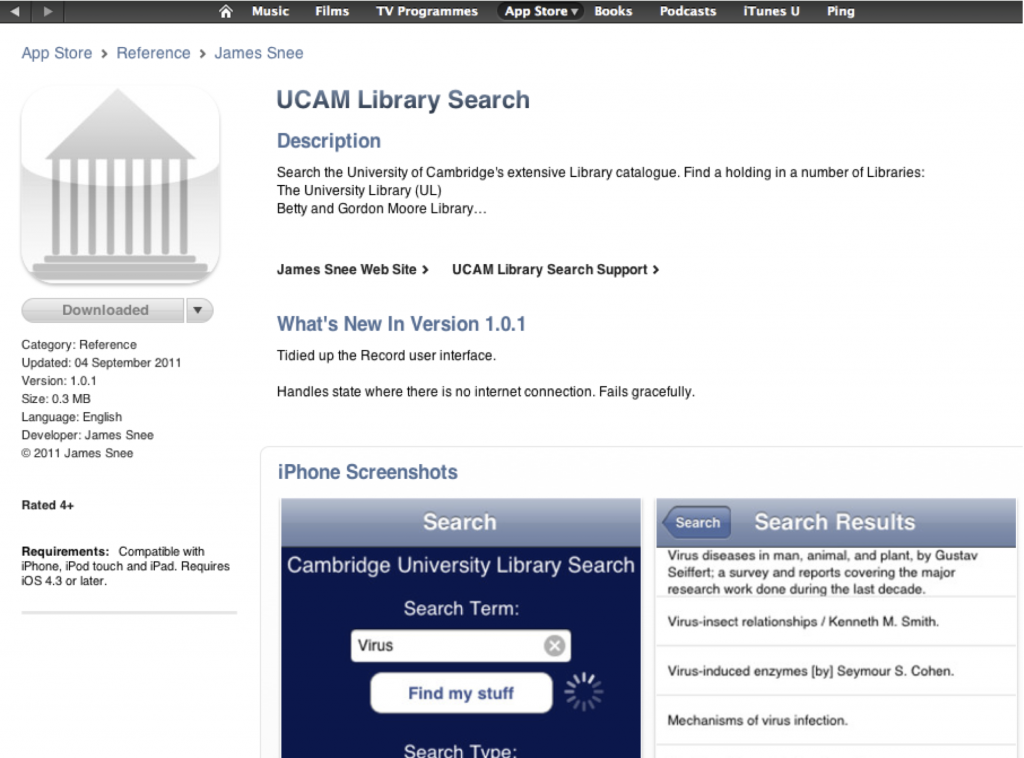
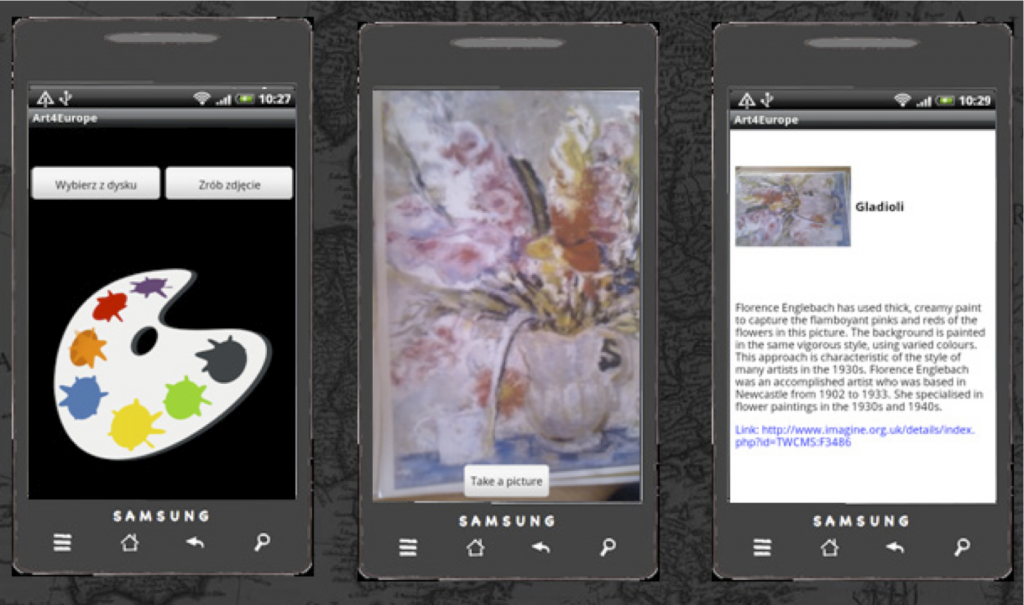
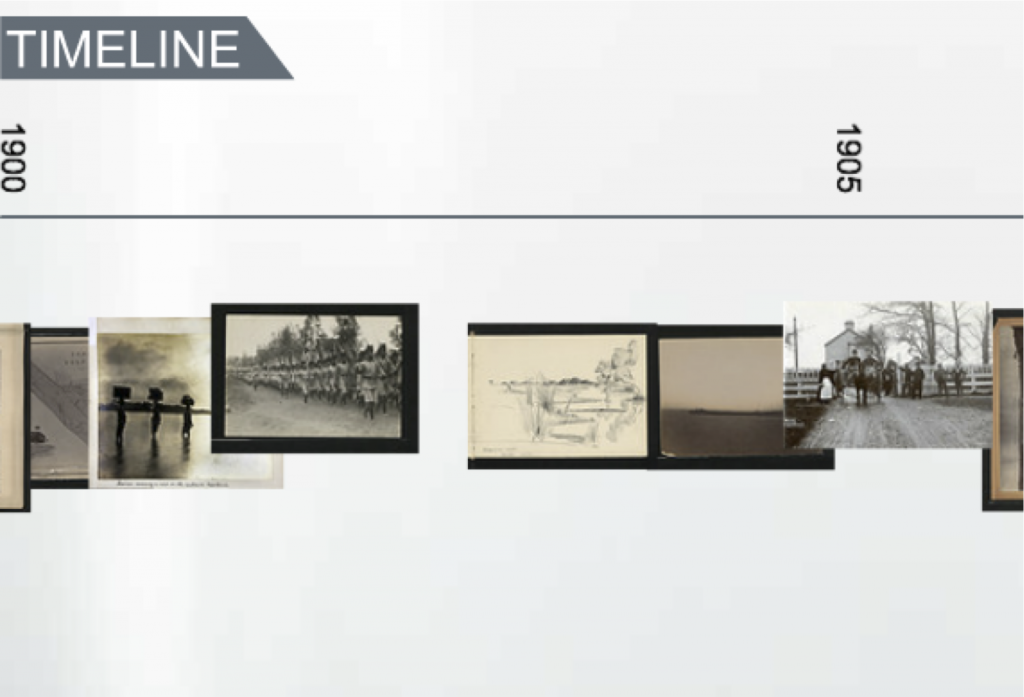
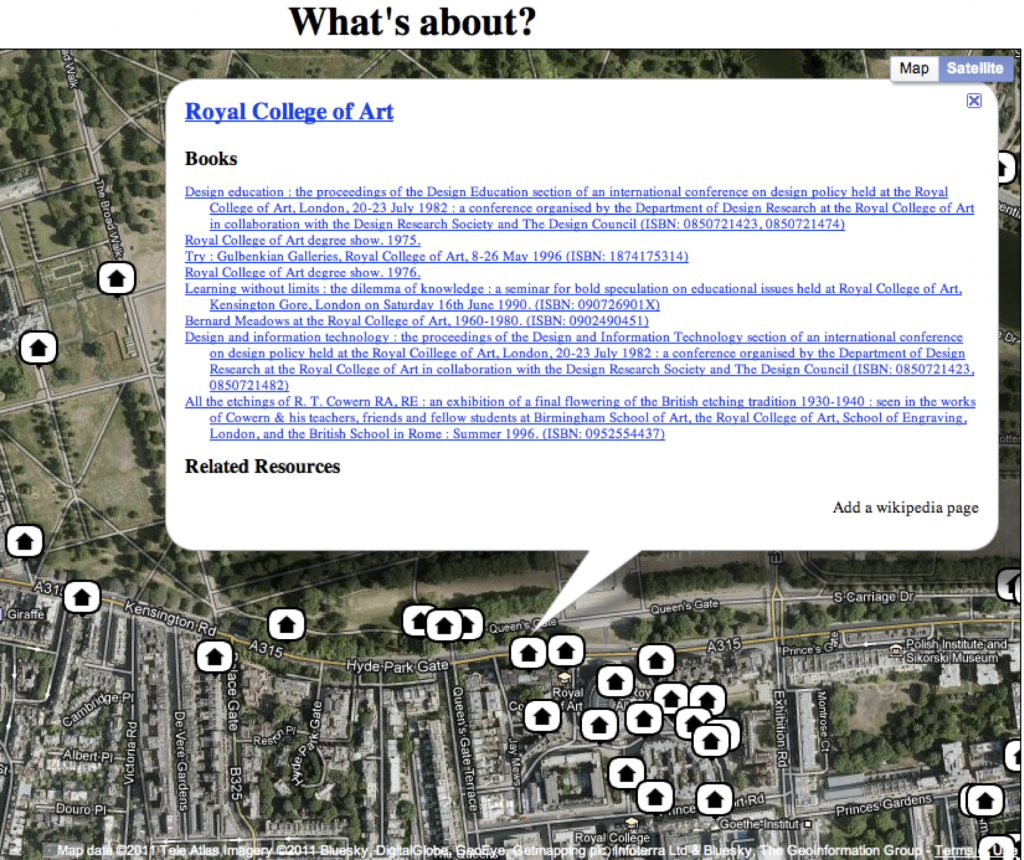
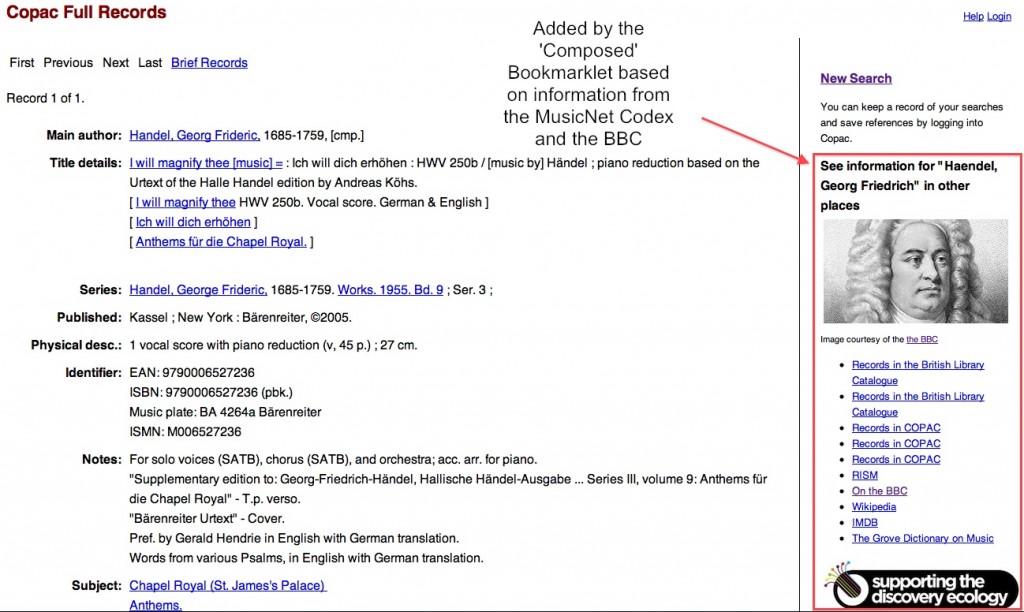
Ah yes, the hack day grows up. You are right but you are probably leaps and bounds ahead of yourself. I expect that the next few years will see a great leap in developer engagement on mass scale, through a variety of means beyond the hack day. Also ways of endorsing things that other people have built – providing hosting space, ‘badging’ apps not made by you with some form of logo that give them some authenticity – perhaps simply a logo, having an R&D fund that is there for developer/data experimentation.
Also, look to your internal resources. Do you have developers on staff? Are they being given creative freedom? Are you using agencies to do your development, invite the agency developers to go wild with your data an dnot conform to a ‘brief’.
There are many ways – I am biased towards R&D through dev days, but that’s because that’s what I do, but there are many many ways of taking the next step – and yes, it is time that stap was taken, or at least peered at properly!
PS Thank you for your kind words about my developer post!
Owen –
[Comments written whilst offline, so may contain loads of unchecked statements -> increased likelihood I’ll post something that’s wrong/not true!;-)]
If you were so minded(?!), there’s probably a paper in this, unpacking each of the sections a little further and maybe exploring the physical metaphor a little further. For example, in physics, friction has a couple of components – static friction and dynamic friction – that we might reinterpret as follows:
– static friction is what stops something moving when you push it. Might we liken this to the initial barrier to entry/access on using an API or metadata source? Static friction needs to be overcome in order to get information flowing. Work needs to be done to overcome static fricion.
– dynamic friction in the physical world refers to the frictional forces in play when one object is sliding across another. In the terms of dataflow, might we think of dynamic firction as providing the ongoing resistance to sharing/information flow, the force that must be overcome in order to keep information flowing? So for example, metered access to data contributes a financial component to dynamic friction – without paying the bills the information flow stops?
Surely someone has already mapped out this metaphor in more detail for an information/knowledge sharing context?!
At the risk of pushing the metaphor too far, the coefficient of (static) friction between two surfaces is a multiplier that relates the force needed to overcome static friction to the normal force of an object representing one of the surfaces exerts on another surface. When we try to combine license types, might we imagine some sort of multidimensioned coefficient of one licence relative to another that describes the extent to which the terms of one license are accommodated by the other? If we order the components (BY, SA, NC), we can then write CC-BY-SA as (1,1,0) and CC-BY as (1,0,0), thus sharing a common component in the BY direction (1,0,0), but differing in the SA component; whereas CC-BY-SA (1,1,0) and CC-SA-NC (0,1,1) both allow you to take any position you like as regards SA? Generally, if we combine licenses, do we need to inclusive OR them to give the final required license type, which would give (1,1,1), CC-BY-SA-NC? (Ref: JISC license wizard; or is the logic different? Didn’t David Wiley also produce some sort of game related to this?) How about if we consider defining the coefficient of friction between the license types as the exclusive OR/XOR between the two licenses (i.e. it highlights the dimensions in which they differ)? So for CC-BY-SA and CC-SA-NC it would be (1,1,0) XOR (0,1,1) = (1,0,1)? Or maybe we taked the ordered relation [license 1, license 2] and say the license friction coefficient is (1,1,0)-(0,1,1) = (1,0,-1) and we see that license 1 adds condition (1,0,0) to license 2 and tries to take away condition (0,0,1) from it (since (1,0,0)-(0,0,1)=(1,0,-1))? [Note that we might define as many different license condition dimensions as we want, as long as we are clear on what each dimension is and how license clauses map on to dimensions? Do we also need a ternary alphabet {1, 0, -1} or {1,*, 0}, eg to say the license requires X, has nothing to say about X, or forbids X? And if so, how do we then construct the coefficient of license friction, and what sort of artihmetic or algebra do we use to work out whether licenses are compatible and what a combined derived license must look like?]
As far as documentation of metadata/APIs goes (because metadata is an API, right?!), I think it would make sense for people who publish APIs to also post a set of very simple worked examples showing how to actually use the API in a ‘toy’ application, or better, a couple of applications that demonstrates: a) the basic usage of the API; b) how (content from) the API might be combined with one other thing, either at an informational level (eg combining information from the API with appropriate data from another source), or display level (for example, showing how to display the data from the API using a ‘standard’ (widely adopted) technique or library). As an example of the latter, if you were publishing a page containing lists of RSS feed URLs, why wouldn’t you also display a previewer to display a selected feed within the page? (I think I know one reason – lots of RSS/Atom feeds are broken, incomplete, or don’t actually render very well in feed readers/previewers;-)
It may be the case that someone else will find cool things to do with your data, but you should be able to find one that, if not cool, at least demonstrates at a very basic level how to engage with the API. And if you can’t do that, or it takes you hours to put together a minimal working example, what makes you think that anyone, ever, will be able to work with that API?!
Ooops… I didn’t mean to ramble/rant on for so long!
Thanks Emma and Tony for the comments.
You both make points about doing something locally with the API – and absolutely yes, it’s a point I should have made in the post. I don’t necessarily think ‘the coolest thing’ will be done by someone else – if you have local developers who understand the data and have a clear view of some business or user need, they are likely to be the best bet to develop something on top of your data.
In the UK HE sector the DevCSI initiative (http://devcsi.ukoln.ac.uk/) has done a lot of work in terms of looking at how local development talent (i.e. developers employed by UK HE institutions) can be nurtured, celebrated, and applied successfully – via the Dev8D event (http://dev8d.org/) and other work.
As Tony points out, if your local developers can’t build something easily on your API then you probably need to rethink. Through work with various JISC projects the Discovery initiative has also identified the local use of APIs/Open Data is a measure of sustainability and robustness – if you build local business critical services on the open data/API, then others know you are taking it seriously, and if the service goes down it will be a priority to restore it.
Tony – I agree with the point about examples – I always find this one of the most effective ways of learning how to make use of an API.
Tony – I like the extension of the ‘friction’ metaphor to static and dynamic friction. It immediately struck me that the issues of licensing, and API were ‘static’, but that the question of ‘using common identifiers’ is more ‘dynamic’ – and that starts to offer some clarity on how I felt this issue “seems less fundamental” – it would be interesting to see if other dynamic friction issues can be identified…